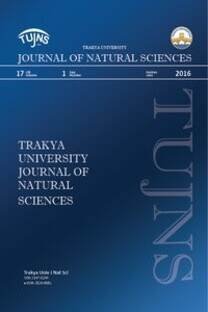CHAOTIC SYNCHRONIZATION METHODS BASED ON STABILITY ANALYSIS OF LINEAR SYSTEMS
CHAOTIC SYNCHRONIZATION, METHODS BASED, STABILITY ANALYSIS
CHAOTIC SYNCHRONIZATION METHODS BASED ON STABILITY ANALYSIS OF LINEAR SYSTEMS
___
- Pecora, L., T. Carroll. Driving systems with chaotic signals. Physical Review A, Vol.44, No.4, 1991, pp.2374- 2384.
- Pecora, L., T. Carroll. Synchronization in chaotic systems. Physical Review Letters, Vol.64, No.8, 1990, pp.821- 824.
- Guemez, J., M. Matias. Modified method for synchronizing and cascading chaotic systems, Physical Review E 52, 1995, pp.2145-2148.
- Pecora, L., T. Carroll, G. Johnson, D. Mar, J. Heagy. Fundamentals of synchronization in chaotic systems, concepts, and applications. Chaos 7(4), 1997, pp.520-543.
- Kocarev, L., U. Parlitz. General approach for chaotic synchronization with applications to communication. Physical Review Letters, Vol.74, No.25, 1995, pp.5028-5031.
- Ogorzalek, M. Taming chaos – part I: Synchronization. IEEE Transactions on Circuits and Systems-I, Vol.40, No.10, 1993, pp.693-699.
- Boccaletti, S., J. Kurths, G. Osipov, D. Valladares, C. Zhou. The synchronization of chaotic systems. Physics Reports 366 (2002), pp.1-101.
- Morgul, O., M. Feki, Synchronization of chaotic systems by using occasional coupling, Physical Review E, Vol.55, No.5, 1997, pp.5004-5010.
- Ali, M., J. Fang. Synchronization of chaos and hyperchaos using linear and nonlinear feedback functions. Physical Review E, Vol.55, No.5, 1997, pp.5285-5290.
- Curran, P., J. Suykens, L. Chua. Absolute stability theory and master-slave synchronization. International Journal Bifurcation and Chaos, Vol.7(12), 1997, pp. 2891-2896.
- Suykens, J., A. Vanderwalle. Master-Slave synchronization of Lur’e systems. International Journal Bifurcation and Chaos, Vol.7(3), 1997, pp. 665-669.
- Yu, H., L. Yanzhu. Chaotic synchronization based on stability criterion of linear systems. Physics Letters A, Vol. 314, Issue 4, 2003, pp.292-298.
- Shimizu, T., N. Morioka, On the bifurcation of symmetric limit cycle to an asymmetric one in a simple model, Physics Letters 76A, 1980, pp.201-204.
- Guemez, J., C. Martin. On the behaviour of coupled chaotic systems exhibiting marginal synchronization. Physics Letters A Vol.226, 1997, pp.264-268.
- ISSN: 1305-6468
- Yayın Aralığı: 1
- Başlangıç: 2000
- Yayıncı: -
BENTONİT ÜZERİNE KOBALT VE NİKEL’İN ADSORPSİYONU VE DESORPSİYONU
Aytaç GÜLTEKİN, Yıldız AKTAŞ, Hilmi İBAR
Zeynep Dilek ADA, Ayşegül ÇERKEZKAYABEKİR
EDİRNE İLİNDE OPTİMUM DUVAR YALITIM KALINLIĞININ ENERJİ TASARRUFUNA ETKİSİ
EDİRNE İLİ UZUNKÖPRÜ İLÇESİ YENİKÖY BELDESİ BAĞCILIK YAPISININ İNCELENMESİ
İlknur KORKUTAL, Elman BAHAR, Hasan Ali ERKAN
MİNERALOJİK KATKILARIN ÇEŞİTLİ TANIMLARI, SINIFLARI, ÖZELLİKLERİ ve KULLANIM ALANLARI
GÜNEŞ IŞIĞININ GÜNEŞ HAVUZUNDA DEPOLANMASININ TEORİK OLARAK İNCELENMESİ
Sevinç MANTAR, Mehmet KARAKILÇIK
CHAOTIC SYNCHRONIZATION METHODS BASED ON STABILITY ANALYSIS OF LINEAR SYSTEMS
Tarihi Kırkpınar’da Uygulanan Bazı Tekniklerin Analizine Biyomekanik Yaklaşım
ASP.NET TEKNOLOJİSİNİ KULLANARAK BİR SATIN ALMA PORTALI UYGULAMASI GELİŞTİRİLMESİ
